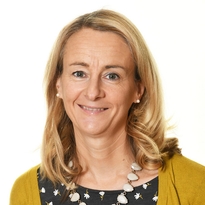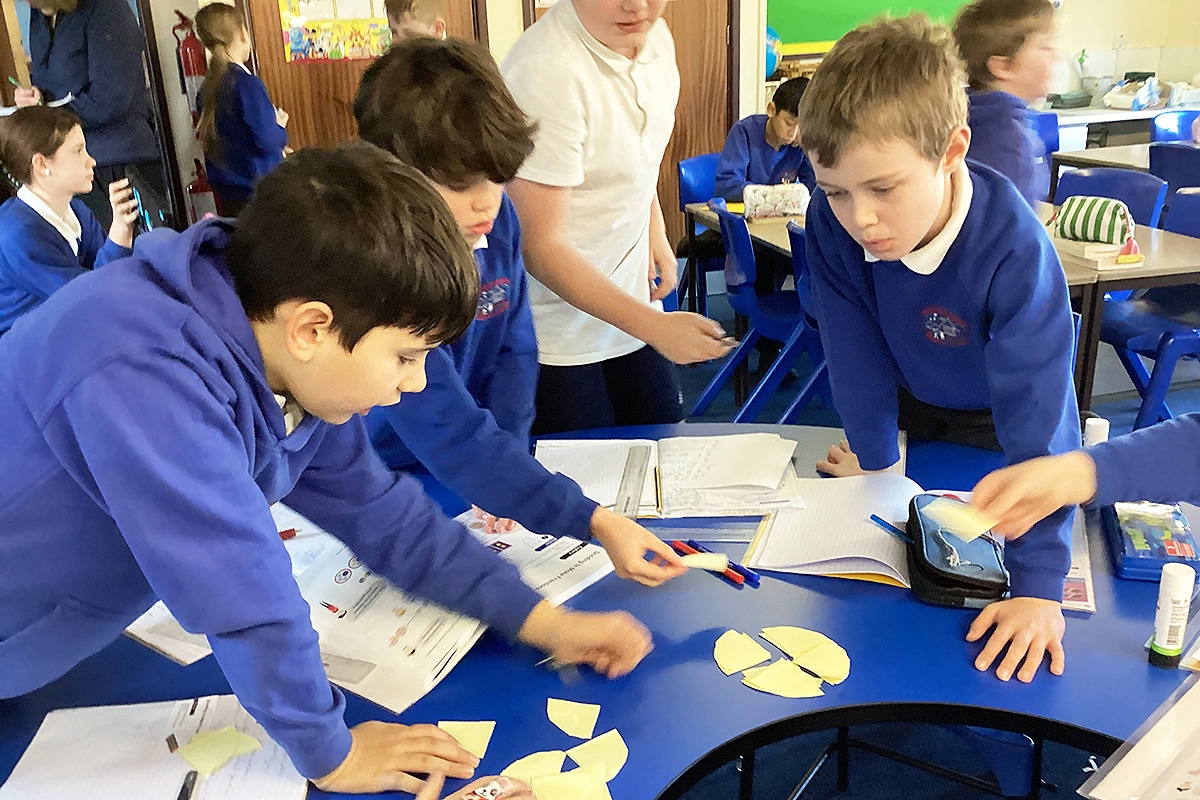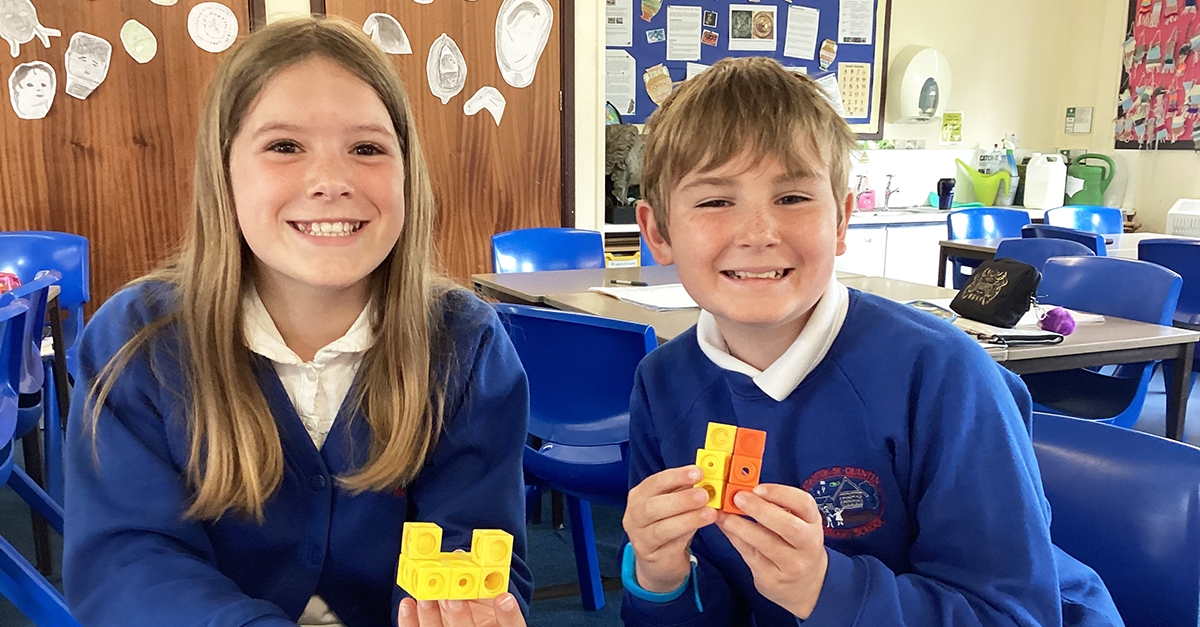Sarah Matthews on creating mathematicians and being top of the SATs tables
The children at this school love maths. There is definitely a passion for the subject within the school.
About ten years ago, Stanton St Quintin Primary had a problem: maths results were lagging significantly behind English. The headteacher decided they needed to do something, so they asked Sarah Matthews to “sort out maths”.
At the time, the school wasn’t using any particular scheme. Sarah started from scratch, and, after a year of searching, found what she wanted. In 2015, Stanton St Quintin adopted Maths — No Problem!
She recalls it was a big investment. “We were a very small school, so what a big overhead it was for us to do the training, to get all the books,” Sarah, now Head of School at Stanton St Quintin, said in an interview. “But it was definitely worth it.”
That up front investment and a decade’s worth of consistency and hard work has borne fruit. According to the latest KS2 SATs results, Stanton St Quintin was the top performer among the 270 schools in Wiltshire in all subjects including maths.
‘So keen’
But even more importantly, the children are enthusiastic, and Stanton St Quintin is churning out young mathematicians. “The children at this school love maths,” Sarah says. “There is definitely a passion for the subject within the school. And they are so keen. They enjoy maths. They look forward to maths.”
Having passionate educators also helps. Sarah is known as the maths lover in her school, although as a student she didn’t like the subject, and not because she wasn’t good at it, but because “I was being told by my dad that I should do maths instead of French.”

Sarah Matthews, Headteacher, Stanton St Quintin Primary
Now, she wears an “I love maths” badge around the school. “The younger children think my name is Mrs. Maths-hews, and I've got maths in my name because I love it so much.”
A teacher since 2000, Sarah did her headteacher training a few years ago and now divides up her week, spending three days in the classroom and two days running the school.
Mixed-age logistics
Stanton St Quintin is a community school near Chippenham, UK, a historic market town about 75 minutes west of London. The school has about 85 pupils in three mixed-age classes. In a feat of logistics, Sarah teaches three different year groups within one maths lesson—eight Year 6 pupils, five in Year 5 and 11 in Year 4. To pull it off, she needs to be extremely well organized. “My iPad is there. I've got my three lessons there. I check it the night before. I've got their journals all ready. It has to be seamless, so that I can go from teaching decimals one minute to doing fractions the next minute to doing whatever, and ensuring that while they're having their time with me, the other group are doing what they should be doing.”

The rule for the children is: if you don’t know what to do, look in your journal or ask a friend. “You don't come and mess up my lesson with what I'm teaching,” she laughs.
She is constantly tweaking the lessons, and finds that if she needs more time with one group, she can adjust what the other groups are doing to free herself up more. And sometimes, she may need to repeat a lesson with all three groups if they aren’t grasping a particular concept. It’s that focus on understanding over acceleration that pays off later with deeper knowledge.
Transform Your Maths Assessment
Insights — our online assessment tool — gives you instant, powerful data to identify gaps and improve results.

Knowledge sharing
Having the various year groups together is beneficial, because the younger children absorb what the older ones are learning, and vice versa, the older ones get the opportunity to pass along their knowledge. In one recent class, Sarah noticed the Year 5 pupils were listening to a fractions lesson she was giving to the Year 4s. So she challenged the Year 5s to “give me three tips for the Year 4s on fractions,” which they did, drawing on their prior learning. “So as well as them being separate, there are opportunities to go and support others.”
However, not all mastery programmes are created equal. As part of her headship training, Sarah went to a larger school in Wiltshire that had asked for her support in maths. The school had chosen another, well-known mastery programme, but she found the excitement and passion for maths was lacking. “It didn’t have the same opportunities for discussion, which challenges and motivates the children.”

One of the reasons Sarah chose Maths — No Problem! was the structure of the lessons and the overall focus on oracy. There’s something about the programme that encourages enthusiasm among the children. She says the structure lets teachers extend more able pupils, and to quickly get children who arrive mid-year up to speed, an important factor in a school such as Stanton St Quintin, which has a military barracks nearby. Maths — No Problem! Is “very supportive for all abilities,” she says.
Successful foundations
For instance, if a Year 2 pupil arrives at the school, Sarah will often start the pupil on the Year 1 material, and catch them up later on. Later on, “we find they’ve done really well because they have those foundations. Starting somebody not at the beginning and expecting them to catch up is really, really tricky.”
It might seem repeating the same lessons over and over gets boring, but she says that’s not the case. “I’ve been teaching it since we’ve taken it on, and I still enjoy teaching it. You still get something new from the children. The whole programme works for us in lots of ways.”
When they first started the programme, a Maths — No Problem! trainer came to the school to deliver Inset. Sarah had specifically requested support with implementing the programme for mixed-aged classes. Now, she does a lot of the training herself with her own staff on how to manage mixed-age classes. She also trains others in schools locally and as far afield as Germany. “Unless you’ve done it, and you’re in those mixed-age classes, there’s a few things you need to perhaps try or be wary of.”
‘Give it a go’
What are some of the barriers to success? Some teachers don’t like textbooks, but Sarah emphasises that the Maths — No Problem! textbooks aren’t like the traditional ones she and her colleagues used when they were at school. She also says “you’ve got to be quite confident in your teaching of maths,” which some teachers may not be. But she points out that local maths hubs now offer valuable tools like scripts to support classroom teaching. Cost is a “big thing” for schools, however being an accredited school helps because of the discounts on materials.
Another barrier for a school just starting out is that it can be tough to go it alone. But support is available. A couple of years ago, Stanton St Quintin federated with another local village school to save costs, and now Sarah spends time every week helping teachers in that school with the lessons, doing pupil voice and training the maths lead. She takes advantage of Maths — No Problem! conferences such as the community event this past November at the Royal Society in London. “It’s really good to go beyond, to network with other Maths — No Problem! schools. It brought me back thinking really enthusiastically about what we can still do here. It’s important to do something local but also to have that bigger community.”
It’s also important to manage expectations. Sometimes a school will take on a new scheme like Maths — No Problem! expecting immediate results, but it doesn’t work like that. “You have to give it a go. It’s not something you implement and see results in six weeks’ time,” she says.
It requires patience to train staff and to tailor the programme to a school’s particular situation such as the mixed-age classes at Stanton St Quintin. Every year they make small changes and improvements. “Did our maths results go up straight away? No, but you need time to implement it. You have to be in it for the long haul.”
Learn more:
The impact of CPD on education and pupil success
Proven revision strategies to support students and staff during SATs
Introducing the Qualification Programme for Teachers: Our most ambitious project yet
